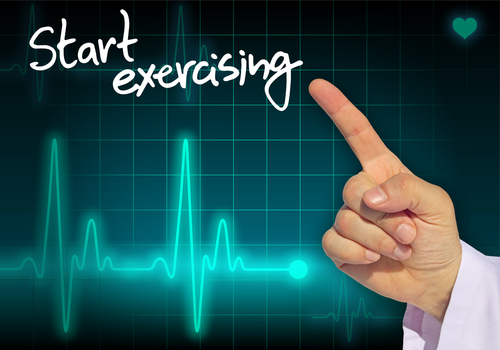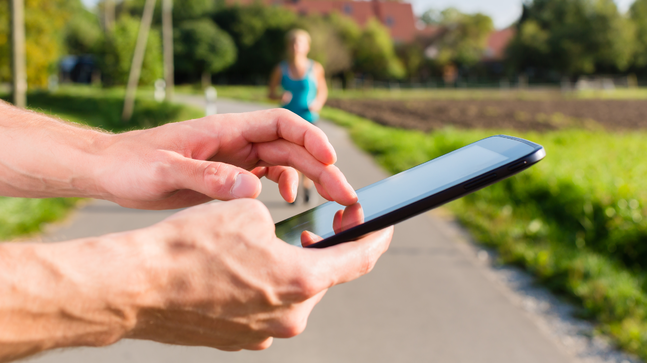What are health and wellness apps?
Health and wellness apps are mobile application programs that offer health-related services on smartphones, tablet PCs and other communication devices. There are many types of health and wellness apps focusing on various aspects of promoting digital health.
The most popular categories of health and wellness apps include:
- Sports and fitness activity tracking
- Diet and nutrition
- Weight loss coaching
- Pharmacy
- Sleep cycle analysis
- Stress reduction and relaxation
- Meditation
- Medical advice and patient community
- Menstrual period tracking
- Pregnancy
- Hospital selection and appointment management

Note that the U.S. Federal Drug Administration (FDA) distinguishes between general health and wellness apps that promote awareness, and wellness from other mobile medical applications that focus on diagnosis and treatment of diseases.
The FDA has authority to regulate mobile medical applications, but the line that distinguishes health and wellness apps from medical apps is slightly blurred.
“Mobile apps are software programs that run on smartphones and other mobile communication devices. They can also be accessories that attach to a smartphone or other mobile communication device, or a combination of accessories and software. Mobile medical apps are medical devices that are mobile apps, meet the definition of a medical device and are an accessory to a regulated medical device or transform a mobile platform into a regulated medical device.”
The FDA doesn’t regulate all mobile apps, and makes that determination based on the following:
“The FDA is taking a tailored, risk-based approach that focuses on the small subset of mobile apps that meet the regulatory definition of ‘device’ and that are intended to be used as an accessory to a regulated medical device, or transform a mobile platform into a regulated medical device. Mobile apps span a wide range of health functions. While many mobile apps carry minimal risk, those that can pose a greater risk to patients will require FDA review.”
For example, an app that records how many miles an individual runs is a health and wellness app. But if the same app claims to track exercise to help address obesity, then it can be linked to a disease state and transforms into a medical app – which may then be regulated by the FDA.
How are health and wellness apps used in the digital health industry?
Health and wellness apps vary a great deal, and are often used interchangeably with the term, mHealth apps. Each is designed with specific target users in mind - such as clinicians, consumers, and healthcare organizations.
Some apps serve more than one use, as when a patient with cardiac disease obtains activity information and sends it to his cardiologist for analysis and treatment recommendations.
As medical devices merge with communication devices and app-makers innovate, the types of available mHealth apps will continue to expand. For now, the most popular and recognized mHealth apps are categorized according to the purpose that each type serves:
Clinical and/or Diagnostic Assistance
- PHR (Personal Health Records) access
- Disease symptom analysis
- Digital medical imaging such as MRI and X-Ray
- Lab results review
- Electronic charts display
Remote Patient Monitoring
- ECG viewer
- Heart monitoring
- Oxygen level monitoring
- Telehealth services
- Vital signs monitoring
 Health-Related Alerts and Reminders
Health-Related Alerts and Reminders
- Prescription management
- Medication adherence
- Appointment reminders
- Menstrual period tracking
Medical Reference
- Medical E&M (Evaluation and Management) coding
- Specialized medical reference
- ICD-9/10 reference
Health and Wellness Promoting
 Exercise and fitness
Exercise and fitness- Sleep quality tracking
- Pregnancy and fetal development
- Healthy eating
- Diet assistance
- Weight loss assistance
- Health-related data tracking
- Psychiatric/behavioural modification assistance
- Chronic care management (such as asthma, diabetes, etc.)
- Smoking cessation and alcoholism treatment
- Relaxation
- Meditation
Productivity
- Hospital selection
- Surgery scheduling
- Remote dictation
- Interoffice communication
Current Market and Industry Trends for Health and Wellness Apps
The ever-present smartphone has spawned a massive market for mobile health and wellness apps. Healthcare-related mobile apps are becoming popular at an astonishing speed, as indicated by the fact that 69% of U.S. smartphone owners track at least one health indicator using them.
According to industry estimates, 500 million smartphone users worldwide will be using a healthcare application by 2015, and by 2018, 50 percent of the more than 3.4 billion smartphone and tablet users will have downloaded mobile health and wellness apps.
Since the GCC currently has the highest number of apps users among high-use countries, the adoption of mobile health and wellness apps in this region is forecast to outpace the rest of the world.
By the end of 2013, more than 97,000 health and wellness apps were available for download with 42% of them adhering to a paid business model.
The top categories of mHealth apps as defined by downloads completed are:
- Weight loss (50 million)
- Exercise (26.5 million)
- Women’s health (10.5 million)
- Sleep & meditation (8 million)
- Pregnancy (7.5 million)
- Tools & instruments (6 million)
- Others (18 million)
The mHealth apps market was valued at $6.6 billion in 2013 and is expected to touch $20.7 billion by 2018 at a CAGR of 25.5%.
The health and wellness apps market is quickly moving from novelty to mainstream.
Since the focus is now shifting from generating data to demonstrating clinical efficacy, the mHealth market will move further toward an integration with healthcare systems and the providers within them.
As the mHealth app industry continues to grow, the outcomes will be healthier consumers who are more empowered in their care – and healthcare providers who appreciate the efficiencies these health and wellness apps have to offer.
External Resources
- FDA on Mobile Medical Applications
- National Library of Medicine’s gallery of mobile apps
- UCSF’s iOS mobile health apps database
- UCSF’s Android mobile health apps database
- iMedicalApps – Review of medical and healthcare apps
- TopOrthoApps – Mobile app reviews for orthopaedic surgeons
- University of California, Riverside’s database of wellness apps
- AISLE7 – Mobile health and wellness app marketing solutions provider
- HHS’s mobile health apps
- Top free health and wellness apps for Android phones on Google Play
- Top health and fitness apps for iOS devices
- MobiHealthNews – Online news, commentary and research on mobile health
- mHealthEvidence – Reference site for scientific proof on mHealth
- Fiercemobilehealth.com
- mhealthnews.com
Internal Resources
Relevant Blogs
Relevant News Articles
- With Smart Technology and Personalized Daily Pill Packets, PillPack Reinvents Retail Pharmacy
- Lose Weight or Get Shamed by This Sadistic Talking App
- 2014 to Witness More Digital Health Acquisitions, Sensor Commoditization and Privacy Issue Concerns
- Smartphones to Turn Into Cancer-Detecting Tools
- Teledermatology is as Reliable and Efficient as In-Person Consultation, Study Says
- du's Wellness App Creates Waves at the Arab Health Congress 2014


